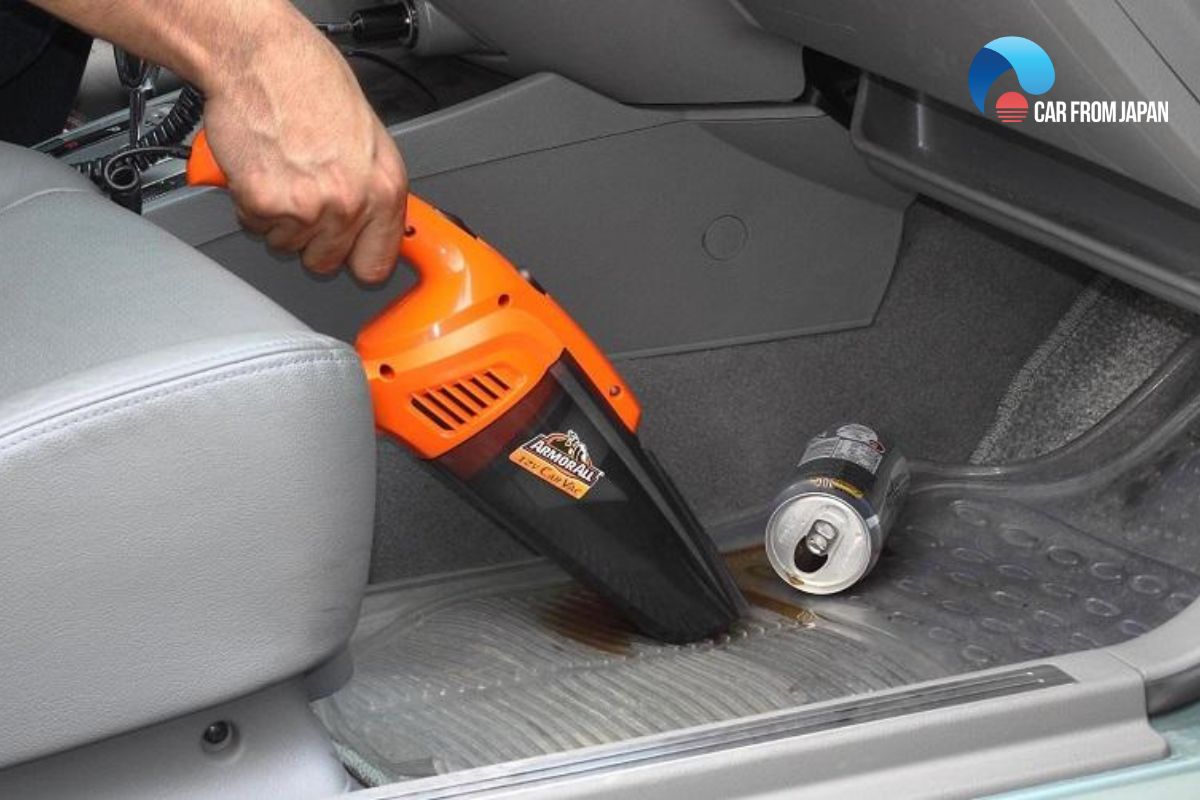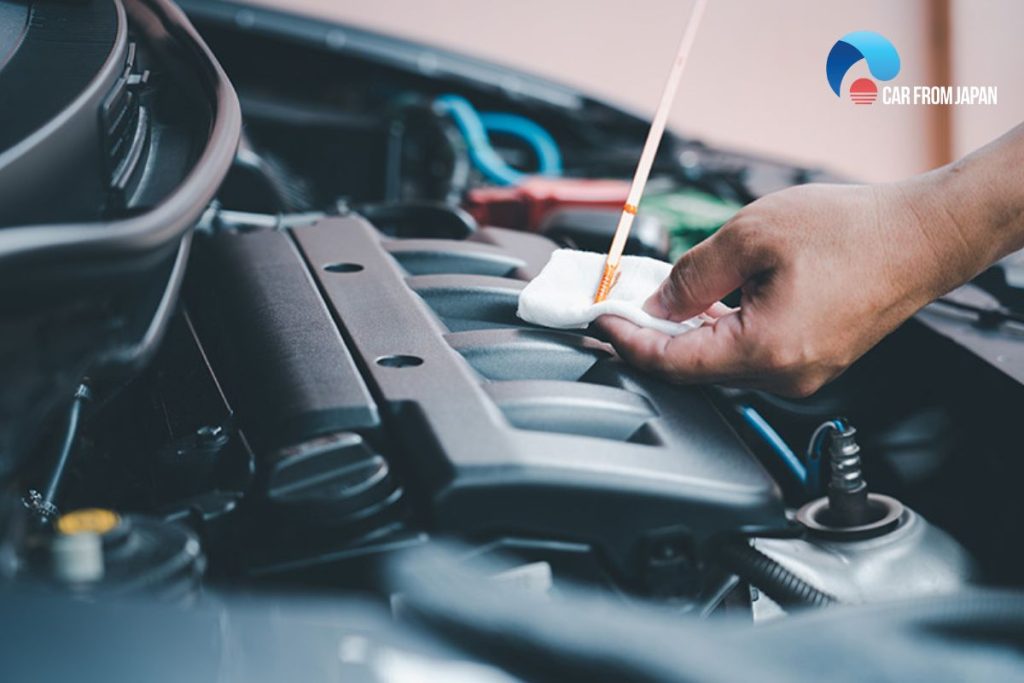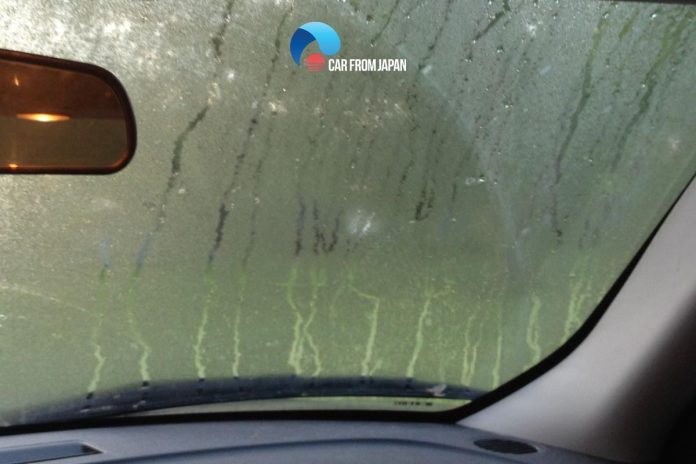Condensation inside car is not only pesky but also expensive too if you don’t know the right solution.
The colder seasons – from autumn to winter – are annoying to too many people because of the dampness of the outside world.
It becomes frustrating when that same problem sneaks inside our four-wheeled friend!
Contents
Condensation Inside Car: Why Does It Happen?
If you want to remove moisture from car, you have to know what causes it in the first place. Warm and humid air gets condensed after coming in contact with a cool surface.
When the weather is cold, the warm breath of the driver and passengers meets the cold windshield and window glasses and gets condensed. It can also happen if there is already something damp in the car that gets heat from sunlight.
Without a ventilation system, the moisture can’t escape and turn into thick mist and water when it touches the glass surface.
Here is a summary of some common reasons for the condensation formulated inside cars:
- Wet shoes, wet clothing, wet umbrellas, and even wet dogs!
When you get inside your automobile when it’s raining outside, the moisture on your clothes, shoes, and other belongings evaporates into the air as they dry.
Carpets and chairs may collect water from your shoes and clothes, allowing the moisture to escape into the air.
- Breathing – every time you breathe, you expel water vapor.
The more time you and your passengers spend in the automobile, the more moisture you breathe into the cabin.
- Water ingress – aging or faulty seals can occasionally allow water inside the vehicle.
- No fresh air circulation – the longer the air sits in the automobile, the more humid it might get.

How To Get Moisture Out of Car?
Following the tricks below will help you stop condensation in your vehicle.
It’s the easiest way to keep the vehicle moisture-free. It will switch on both the heat and the AC systems.
The AC will clear up moisture from the air and the heating system will keep the interior comfortably warm.
Create a Passage for Ventilation
If it’s a sunny day or the weather is warm, leave a couple of windows slightly open while driving. It will keep the interior warm and create a passage for the moisture to get outside.
However, don’t make the mistake of keeping the windows open at night. It will make the windshield hazy with dew.
See More: Tricks to Clean the Inside of Windshield
Keep Everything Close on Wet Days
The rainy days are the worst for creating condensation inside car. So, don’t leave the windows or the sunroof open on these days. It will let moisture in and make all the surfaces foggy.
Discard all the Wet Items
Leaving damp or wet items such as shoes, clothes, floor carpet, and other things inside is one of the main reasons for condensation inside car.
As you already know the cause of foggy glass surfaces, you should remove every source of moisture to keep the glasses clear.

Check for coolant leaks and other types of discharge from the vent system, windows, or sunroof.
Repair and seal the leaks because these damp things will create moisture, which will then transform into fog.
Turn Off the Recirculation Valve
Your car certainly has this valve if it has an air conditioning system. Nevertheless, many people don’t have a clue about its position.
Well, look for a switch featuring the picture of a C shape with an arrow or a person getting hit in the face by an arrow.
It does the job of recycling the inside air and recirculating it. You have to switch it off to allow dry air in from outside and remove the indoor moisture.
Using Rain X or Shaving cream
Using Rain X or Shaving cream is also a good tip to stop condensation inside car.
Look for any Leak
Condensation might also be caused by leaks that have accumulated over time in your vehicle. Mist can form anywhere, from the heater matrix to the doors and the sunroof seal.
However, if your vehicle does have a leak, determining the source of the leak might be tricky. This is where a skilled technician may assist.
Be warned that finding a leak may require completely disassembling a vehicle, which may be costly, especially if your vehicle is old.
Older vehicles are more prone to leaks, and a leak is more likely to emerge after six or seven years.

How To Prevent The Condensation Inside Car In A Long Term?
Condensation would be completely avoidable in an ideal world, and we wouldn’t have to bother about defrosting or defogging our automobiles in the morning.
Unfortunately, such is not the case, making it crucial to understand how to deal with foggy windows. But with a few simple steps, you can reduce condensation or perhaps stop it altogether.
Park your car in an underground garage or indoor lot
Although hardly everyone has access to one, parking in an underground garage or indoor lot is the only surefire way to completely eliminate moisture.
Even if you can’t park indoors every day, attempt to do so if you know you’ll be in a hurry or have a crucial function to attend to so that you won’t worry about defrosting your windows in the morning.
Cover your car with thick and high-quality covers
If you can’t park inside during the winter, how can you prevent moisture on inside of windshield?
A fantastic idea is to use a vehicle cover. They can aid in maintaining the surface temperature and avoiding the formation of condensation in car overnight.
Leave out wet objects from cars
Objects that are wet, such as wet towels, wet garments, wet shoes or boots, or wet umbrellas, can lead to condensation inside car or on the windows and other surfaces.
Ventilate the vehicle
After lengthy journeys or after keeping your vehicle parked for an extended period of time, open the windows and doors to let fresh air flow through the inside.
This will assist in removing any moisture that has accumulated inside the car.

Get a dehumidifier
Consider using a dehumidifier to keep the air inside your car dry and lessen the amount of condensation that collects if you don’t have access to a garage or carport.
FAQs on Condensation Inside Car
Is it true that new automobiles are more prone to condensation buildup?
Modern vehicles have significantly superior seals, making them more watertight. This makes any damp air trapped within the car more difficult to leave.
Moisture levels will decrease if movement is induced using a fresh air source.
Increased insulation also helps contemporary automobiles to stay warmer after being parked.
The longer the air inside the vehicle is warmer than the air outside, the more condensation will form on the vehicle’s chilly windows.
How do cars get damaged by condensation?
Water that accumulates on windows over time may cause seals to fail, allowing water to leak through onto important electronics and into the inner metal of your car, where it will rust and corrode.
Additionally, moist interiors can cause mold growth, vinyl to crack, leatherwork to fall apart, and more.
Can condensation come from a car AC?
The system removes humidity from the air to chill the cabin, but that moisture needs somewhere to go!
Technically speaking, the evaporator core of the air conditioner condenses (makes a liquid out of) the humidity.
The liquid then uses the evaporator drain to leave the vehicle and land on the pavement. A few drips are typical, but a puddle is not!
Is condensation in a car better off with hot or cold air?
Make sure the air conditioner is on. Use the heating in addition to the air conditioning.
You should also keep the environment inside dry. Hot air will evaporate some moisture off the glass and then cool and condense on the glass again.
Can a leaky automobile be caused by condensation?
Condensation from the air conditioner or exhaust is typically to blame for your car’s leak, which is most noticeable at the back of the vehicle. These two different leaks are both typical.
Check out this video from ChrixFix to learn more about how to stop condensation in car windows!
Conclusion
We have just scrolled through some notices on ways to stop and prevent condensation inside car.
Hope you find this piece of information insightful and see you again with more updated maintenance tips from Car From Japan!




Very informative piece.. Kudos
Very educative.Keep the goodwork.
Thank you this is very educative keep on the good work.
Evening my question is does old model of Raum have the stabilizer link?, why do most engine of Toyota 5E, 4E, and 5A have a linkage at the engine. What can manufacturer do to help the customers.
Mine is a question Abit different from the topic,when the cars front windscreen has a crack does it have a remedy or it’s full replacement?the crack is runs halfway the screen
You have to replace it, but if it was a 5mm crack just drill a hole at the tip of the crack, it prevent s the extension of the crack.
look for a switch featuring the picture of a C shape with an arrow or a person getting hit in the face by an arrow. It does the job of recycling the inside air and recirculate it.
never knew of this,new knowledge..
Thanks , it is very useful
The shaving cream treatment is exactly what I was looking for. I will be trying it out tomorrow, thanks.